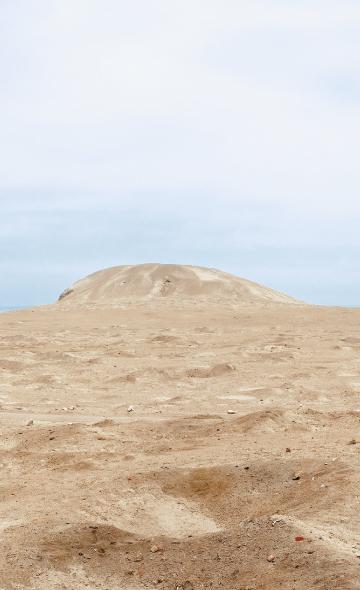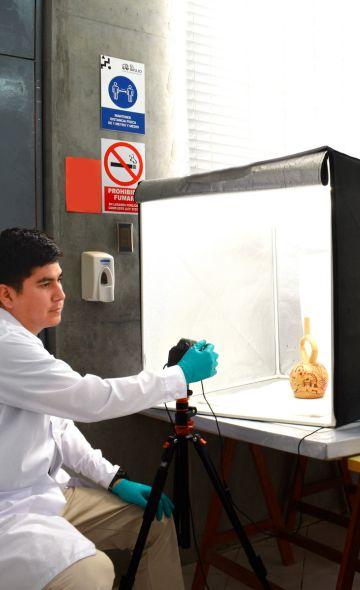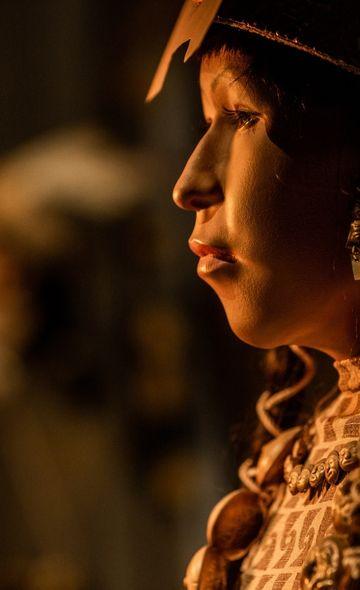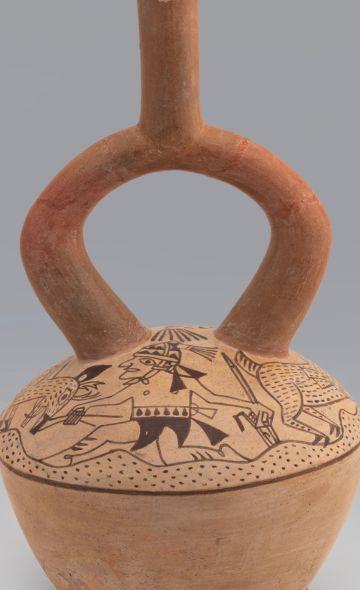- Visitors
- Researchers
- Students
- Community
- Information for the tourist
- Hours and fees
- How to get?
- Visitor Regulations
- Virtual tours
- Classic route
- Mystical route
- Specialized route
- Site museum
- Know the town
- Cultural Spaces
- Cao Museum
- Huaca Cao Viejo
- Huaca Prieta
- Huaca Cortada
- Ceremonial Well
- Walls
- Play at home
- Puzzle
- Trivia
- Memorize
- Crosswords
- Alphabet soup
- Crafts
- Pac-Man Moche
- Workshops and Inventory
- Micro-workshops
- Collections inventory
- News
- Researchers
- What about Huaqueo in Peru? Huaqueo, a threat to cultural heritage
News
CategoriesSelect the category you want to see:
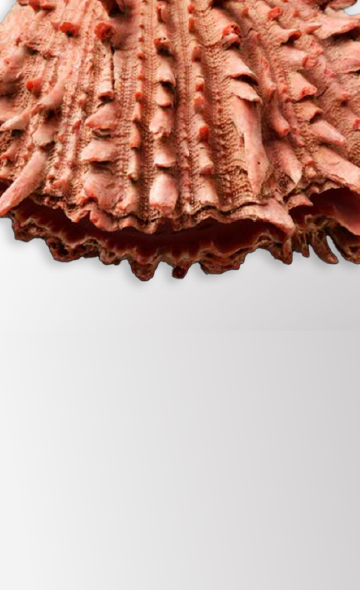
The Use of Spondylus Shells in Moche Ceremonial Contexts: Why Were They Symbols of Status and Wealth? ...
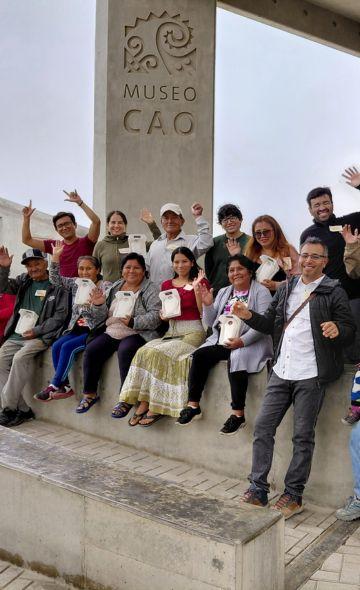
El Brujo Celebrated International Museum Day with Its Community: A Day of Encounter and Cultural Co-Creation ...
To receive new news.
Por: Katerine Albornoz
By Katerine Albornoz
Peru possesses a rich cultural heritage in its different expressions: immaterial, immovable, and movable cultural heritage (UNESCO 1947). However, this heritage is exposed to different threats from nature and humans. In this case, we will discuss a threat caused by human actions: looting.
Alvarez (2022) mentions that the term “huaqueo” (looting) has had different meanings at a morphological and etymological level. In the book “Historical telling of the trip to Meridial America” by Juan and Jorge Ulloa (1713), the term “Guaquero” was used to refer to cups for drinking, and there are other historical documents that recount the different meanings acquired throughout history.
What does looting consist of?
Chirinos Ogata (2018) defined looting as the extraction of material cultural from archaeological sites as part of an intervention that is not part of a scientific investigation. Keep in mind that excavations outside of an investigation do not perform the minute recordation of the unique context or use adequate methodologies for excavation.
The traces of looting at the El Brujo Archaeological Complex (CAEB) are seen in the existence of multiple circular holes in the surface (Figure 1), on the edges of which it is common to find fragments of ceramics and other materials.
Other traces of looting include, unfortunately, an enormous scar in the top of Huaca Prieta, attributed to Chilean soldiers during the War of the Pacific (Kroeber 1930), as well as a large transversal gash on the southern face of Huaca Cortada, also called Huaca El Brujo (Figure 2).
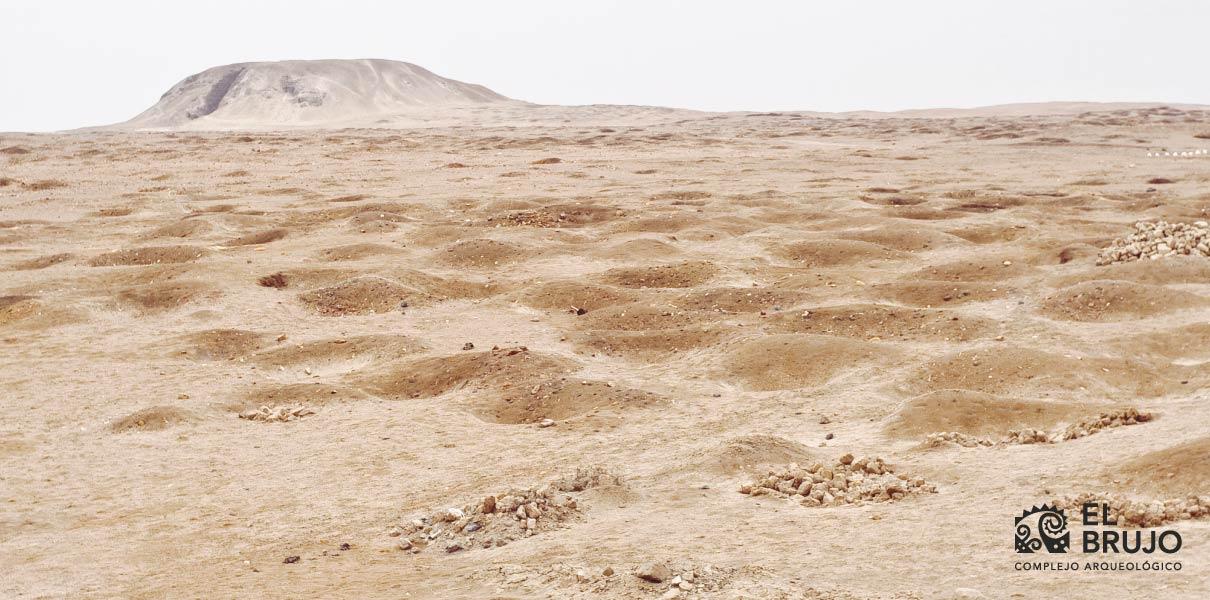
Looting: present from the Colonial Period to the 20th century
To better understand looting and its presence in Peru, it is necessary to know when this activity has been recorded, in chronicles or in the legal record.
Zevallos (1994), in his work “Huacas and looters in Trujillo during the Viceroyalty”, describes and explains that with the arrival of the Spanish, the activity of looting being to occur in an unrestrained manner. One of the motives of this was the recognition of huacas as keepers of treasures (Figure 2).
This is reflected in the following quote: “all the treasure that was found in the provinces and Guacas that are their temples and the burials put together, would make what the Spanish had taken look like a little bit” (Cieza de León 1984, pg. 77). Furthermore, the figure of the huaca as a pagan place contributed to the justification of looting (Chirinos Ogata 2018).
During this period, there is documentation of a legal framework that had legal procedures to encourage and support looting under the premise of “looking for treasure” (Amat Olazábal 2012). Furthermore, the Spanish Crown, through the government of Peru, received payment for the rights to smelting and marking, along with the Fifth that had to be paid to the King (Leviller 1921). This situation did not change in the 17th century, but rather the activity was stimulated on the North Coast through the implementation of the mita exclusively for working in huacas (Zevallos 1994).
During the 19th century, there is documentation that the Peruvian state participated as a figure of support, with the Republican Congress declaring in 1839 that: “All Peruvians who wish to work in the discovery of hidden treasures or huacas are allowed” (Zevallos 1994).
With independence, on July 28, 1821, the figure of the State began to change progressively. One of its first measures was the prohibition of the extraction of archaeological cultural objects (stones, ancient metalwork, textiles, and other objects from the huacas) without the express and special license from the state (Supreme Decree No. 89 – 1822) (National Institute of Culture 2002).
Following this, the state adopted a firm position as protector and owner of the historic and archaeological monuments that existed before the era of the Viceroyalty. Consequently, they implemented the prohibition and fine of anyone who explored or excavated at archaeological sites, unless they had a research permit (Law No. 6634 1929).
During the subsequent years (20th century), new laws were implemented for the benefit of cultural heritage, which were reflected in the constitutions of 1933 (Art. 82) and 1979 (Art. 36), as well as laws such as No. 8853, passed in 1939, and the General Law of Protection for the Cultural Heritage of the Nation (No. 24047), passed in 1985 (Ley No. 8853 1939; Ley General de Amparo al Patrimonio Cultural de La Nación – No. 24047; Constitución Política Del Perú 1933; Constitución Política de La República Del Perú 1979; Código Penal 1991).
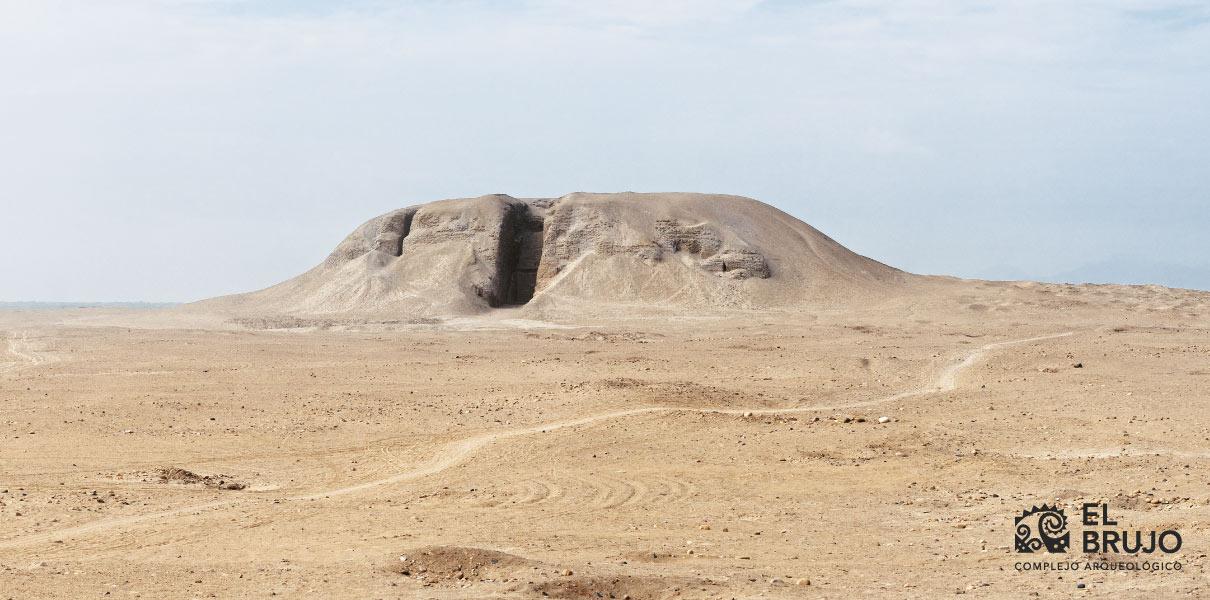
Thus, looting is not an activity that has only recently affected our heritage, and at its beginning, the figure of the State or its governors in turn encouraged and promoted its practice. This changed in the following years until a firm position was adopted in favor of cultural heritage, which is reflected in different laws such as the constitution and the penal code.
During the last 50 years, the image of the looter has gained relevance as the result of the finds on the North Coast such as the case of the ex-hacienda Batán Grande (currently known as the Pómac Forest Historic Sanctuary) At this place, remains of the Sicán culture were found and looting was recorded in the perforation of tombs and the illicit trafficking of cultural goods, leading to it becoming known as the “Mecca of Looting” (Elera 2016).
These examples tell of the presence of looting on the Peruvian coast. In the face of this problem, local authorities and regional governments have started campaigns to raise awareness through the diffusion of images and preventative operations (Figure 3) (Chirinos Ogata 2018; Vera 2021).
From what has been exposed about looting in historic, legal, and ethnohistoric records, we can gain a better understanding of the context of the development of looting in Peru, concluding that this is not an activity exclusive to the present day, but on the contrary, comes from the Colonial Era. In the present, we can see that looting is not the only threat to our archaeological heritage, which is unprotected against other illicit activities such as land trafficking.
To all of this, we can add the lack of awareness about our cultural heritage, especially our archaeological heritage, which leads to an aggravation of the circumstances in which it finds itself. Because of this situation, in the last years different initiatives from institutions or collectives have arisen that promote and spread knowledge about our cultural heritage with the objective of revaluing it and promoting its protection.
Bibliography
- Álvarez V, A. (2022, May). La palabra Huaqueo y su uso en el Perú. Huaycán Cultural. https://www.facebook.com/watch/live/?ref=watch_permalink&v=832745531036259
- Amat Olazábal, H. (2012). El pasado y la gestión del patrimonio cultural. Investigaciones Sociales, 16, 257–265. http://blog.pucp.edu.pe/item/24634.
- Chirinos Ogata, P. (2018). Entre tumbas y medianoche: Contextos y cambios de las representaciones sobre los “huaqueros” en el Perú. Conferación Académica Nipona, Español y Latinoamericana, 37–55.
- Cieza de León, P. (1984). Crónica del Perú- Tercera parte.
- Ley No8853, (1939).
- Ley General de Amparo al Patrimonio cultural de la Nación - No24047, 1985.
- Constitución Política del Perú, Pub. L. No. Art. 82 (1933).
- Constitución Política de la República del Perú, Pub. L. No. Art. 36 (1979).
- Ley No6634, (1929).
- Código Penal, Diario El Peruano (1991).
- Elera, C. (2016). Museo Nacional de Sicán. Tecnología y Humanidades, 7(1), 170–177.
- Franco, R., Gálvez, C., & Vásquez, S. (1998). Un pozo ceremonial Moche en el complejo arqueológico “EI Brujo.” 307–328.
- Instituto Nacional de Cultura. (2002). 180 años de Museo Nacional. Dirección General del Sistema Nacional de Museos del Estado.
- Kroeber. (1930). Archaeological Explorations in Peru: Vol. II (L. Berthold, Ed.).
- Leviller, R. (1921). Gobernantes del Perú: Cartas y papeles S.XVI: Vol. II. Sucesores de Rivadeneyra S.A. https://archive.org/details/gobernantesdelpe02peru/page/44/mode/2up
- UNESCO. (1947). Convención sobre la protección del patrimonio mundial, cultural y natural.
- Vera, A. (2021, April 1). Piura: ministerio de Cultura extremará vigilancia para evitar “huaqueo” por Semana Santa. El Regional Piura. https://www.elregionalpiura.com.pe/index.php/region-piura/150-piura/49072-piura-ministerio-de-cultura-extremara-vigilancia-para-evitar-huaqueo-por-semana-santa
- Zevallos, J. (1994). Huacas y Huaqueros en Trujillo durante el Virreynato.
Researchers , outstanding news


